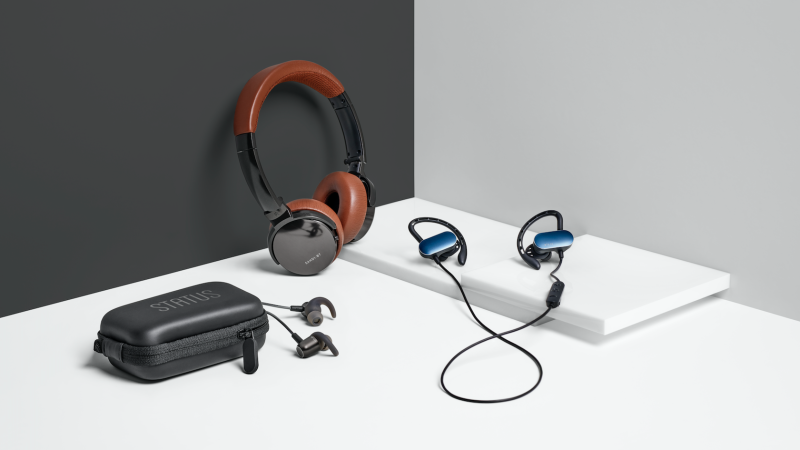
Status Audio has been best known for its cult favorite CB-1 wired over-ears, even as Bluetooth headphones have taken over the world. But while the company might not have been first to the wireless market, their first three entries are all excellent.
The previously-released (and now $99) BT One on-ears have been joined in the lineup by the brand new $79 BT Structure and $69 BT Transfer earbuds, and they all sound incredible for their respective prices.
I know on-ear headphones are controversial, and if you don’t like them, you won’t like the BT Ones either. But they sound terrific, with a U-shaped EQ pattern that emphasizes the highs and lows for a punchy, lively soundscape. It’s a surprising approach than the company that made its name on the purposely flat-tuned CB-1s, but it works. They also boast 30 hours of battery life, Bluetooth 5.0 for a stable connection, USB-C charging, and comfortable leather earcups.
Advertisement
If you prefer in-ear monitors, Status has you covered with two different options. The larger BT Structures include over-ear wings for a secure fit, a whopping 12 hours of battery life, and a larger-than-usual 9mm dual driver system that allows them to achieve an impressive depth on the low end without sounding muddy. They’re the best-sounding wireless earbuds I’ve ever tried.
For $10 less, the BT Transfers offer a smaller form factor at the expense of battery life (eight hours instead of 12) and slightly smaller 8mm drivers, though those are still larger than the ~6mm drivers you’d find in most earbuds of this size. To my ears, they sounded nearly identical to the Structures, so I’d choose based on the form factor that’s right for you. Both sets of earbuds are IPX5 water resistant (not great, but good enough for exercise), include Bluetooth 5.0, and sadly, charge over microUSB.
The original CB-1s were famous for offering sound quality that you’d expect from headphones that cost twice as much, and while it took some time, it’s great to see that the company has made the transition to wireless headphones without sacrificing that essential value proposition.













